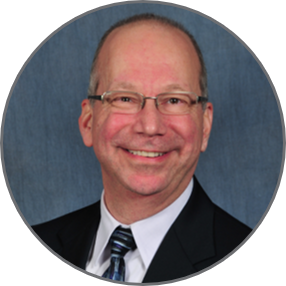8 Must-Know CV Tips for Radiologists—Whether Job Hunting or Not
If your Curriculum Vitae isn’t all it could be, you may as well be stacking trophies in a cave. I say this as a longtime radiologist recruiter who...

Remote radiologist jobs with flexible schedules, equitable pay, and the most advanced reading platform. Discover teleradiology at vRad.

Radiologist well-being matters. Explore how vRad takes action to prevent burnout with expert-led, confidential support through our partnership with VITAL WorkLife. Helping radiologists thrive.

Visit the vRad Blog for radiologist experiences at vRad, career resources, and more.

vRad provides radiology residents and fellows free radiology education resources for ABR boards, noon lectures, and CME.

Teleradiology services leader since 2001. See how vRad AI is helping deliver faster, higher-quality care for 50,000+ critical patients each year.

Subspecialist care for the women in your community. 48-hour screenings. 1-hour diagnostics. Comprehensive compliance and inspection support.

vRad’s stroke protocol auto-assigns stroke cases to the top of all available radiologists’ worklists, with requirements to be read next.

vRad’s unique teleradiology workflow for trauma studies delivers consistently fast turnaround times—even during periods of high volume.

vRad’s Operations Center is the central hub that ensures imaging studies and communications are handled efficiently and swiftly.

vRad is delivering faster radiology turnaround times for 40,000+ critical patients annually, using four unique strategies, including AI.
.jpg?width=1024&height=576&name=vRad-High-Quality-Patient-Care-1024x576%20(1).jpg)
vRad is developing and using AI to improve radiology quality assurance and reduce medical malpractice risk.

Now you can power your practice with the same fully integrated technology and support ecosystem we use. The vRad Platform.

Since developing and launching our first model in 2015, vRad has been at the forefront of AI in radiology.

Since 2010, vRad Radiology Education has provided high-quality radiology CME. Open to all radiologists, these 15-minute online modules are a convenient way to stay up to date on practical radiology topics.

Join vRad’s annual spring CME conference featuring top speakers and practical radiology topics.

vRad provides radiology residents and fellows free radiology education resources for ABR boards, noon lectures, and CME.

Academically oriented radiologists love practicing at vRad too. Check out the research published by vRad radiologists and team members.

Learn how vRad revolutionized radiology and has been at the forefront of innovation since 2001.

%20(2).jpg?width=1008&height=755&name=Copy%20of%20Mega%20Nav%20Images%202025%20(1008%20x%20755%20px)%20(2).jpg)

Visit the vRad blog for radiologist experiences at vRad, career resources, and more.


Explore our practice’s reading platform, breast imaging program, AI, and more. Plus, hear from vRad radiologists about what it’s like to practice at vRad.

Ready to be part of something meaningful? Explore team member careers at vRad.
3 min read
 Raymond Montecalvo, MD
:
March 12, 2021
Raymond Montecalvo, MD
:
March 12, 2021
.png)
More than 41% of radiologists separated from at least one practice over a recent four-year period, according to the Journal of the American College of Radiology, underscoring the specialty’s increasingly mobile nature.
Medical facilities bear the brunt of the costs associated with this transiency. Competition for a finite pool of qualified physicians is contributing to salary increases, with the average annual salary for radiologists exceeding $400,000 for the first time in 2019, up 3.6% over the previous year.
But salary growth is only a part of the burden for administrators. When a radiologist leaves, there’s the expense of recruiting and hiring a replacement; until the vacancy is filled, remaining staff must shoulder the stress of additional workload, including managing and training an interim locum tenens or a new hire. Any time a physician departs, there’s potential disruption for patients under their care.
Before deciding how to help ensure your radiologists are with you for the long haul, first consider what is motivating so many to look outside of their current practices.
In 2019, the average radiologist salary exceeded $400,000. Radiologists know they have chosen a challenging profession, and they expect to be compensated appropriately when they rise to the challenge. Many practices have developed RVU-based incentives designed to reward physicians who meet or exceed performance goals.
Based on feedback from our network, many radiologists report experience with RVU-based systems not based in reality. They agree to a compensation package only to find incentives are out-of-reach once they begin working within the system. Often, they find the practice does not provide them with the productivity tools – technology, advanced PACS and reporting systems, support staff, etc. – to enable them to achieve their potential.
So, while a large incentive package may attract a radiologist, retention is based on that radiologist’s perception that success is within their control.
-1.png?width=828&name=Graphics%20for%20E-Book%20(27)-1.png)
.png?width=247&name=%E2%80%9CThe%20future%20of%20private%20radiology%20practices%20will%20be%20impacted%20by%20the%20pandemic%20in%20that%20practices%20are%20likely%20to%20restructure%20operational%20policies%20and%20business%20risks%20to%20account%20for%20potential%20sudden%20volume%20decrea%20(14).png)
Radiology is the most mentally demanding physician specialty, contributing to particularly high rates of burnout, according to a recent report in JACR. The research also notes that those early in their careers, and those late in their careers were more likely to have recently separated from a practice.
For early-career physicians, a stressful experience in their first or second placement likely has them looking for greener pastures elsewhere. As millennials, they are in general more sensitive to issues that threaten their desire for balance between life and work. To retain younger physicians, hospitals and medical groups need to provide them flexible, predictable schedules, and access to technology tools that help ease the stress of managing their growing workload. Home workstations are a practical option for medical groups, and attractive to a growing number of radiologists.
Late-career physicians are faced with the same burnout-inducing stressors, leading many to escape through early retirement. Burnout is contributing to the rapid departure of experienced radiologists at a time when their skills are in high demand. To entice senior physicians to extend their careers, radiology administrators must reduce the administrative burdens that distract them from performing studies. In addition, many practices are offering reduced schedules as alternatives to early retirement. Working part time, physicians can keep doing work they love, have more time to enjoy their success, and continue to contribute to the long-term health of their practice.
Physicians are on the lookout for new and better opportunities. Is the grass greener on your side of the fence? Does your practice stand out? How does it stand out? Honestly evaluate your practice in four key areas and address any weaknesses.

Set up your new radiologists for success—and happiness—through a robust, well-run onboarding program, which includes many of the following ingredients:
After working so hard to identify and attract good radiologists to your practice, go the extra mile to ensure their transition goes smoothly.

If your Curriculum Vitae isn’t all it could be, you may as well be stacking trophies in a cave. I say this as a longtime radiologist recruiter who...
.png)
As the Vice President of Human Resources at vRad, I have the distinct privilege to oversee the recruitment and retention of our 500+ physicians. A...

1 min read
One of the first questions any radiologist has when exploring a new opportunity is about salary. It's an important question. At vRad, some...
vRad (Virtual Radiologic) is a national radiology practice combining clinical excellence with cutting-edge technology development. Each year, we bring exceptional radiology care to millions of patients and empower healthcare providers with technology-driven solutions.
Non-Clinical Inquiries (Total Free):
800.737.0610
Outside U.S.:
011.1.952.595.1111
3600 Minnesota Drive, Suite 800
Edina, MN 55435